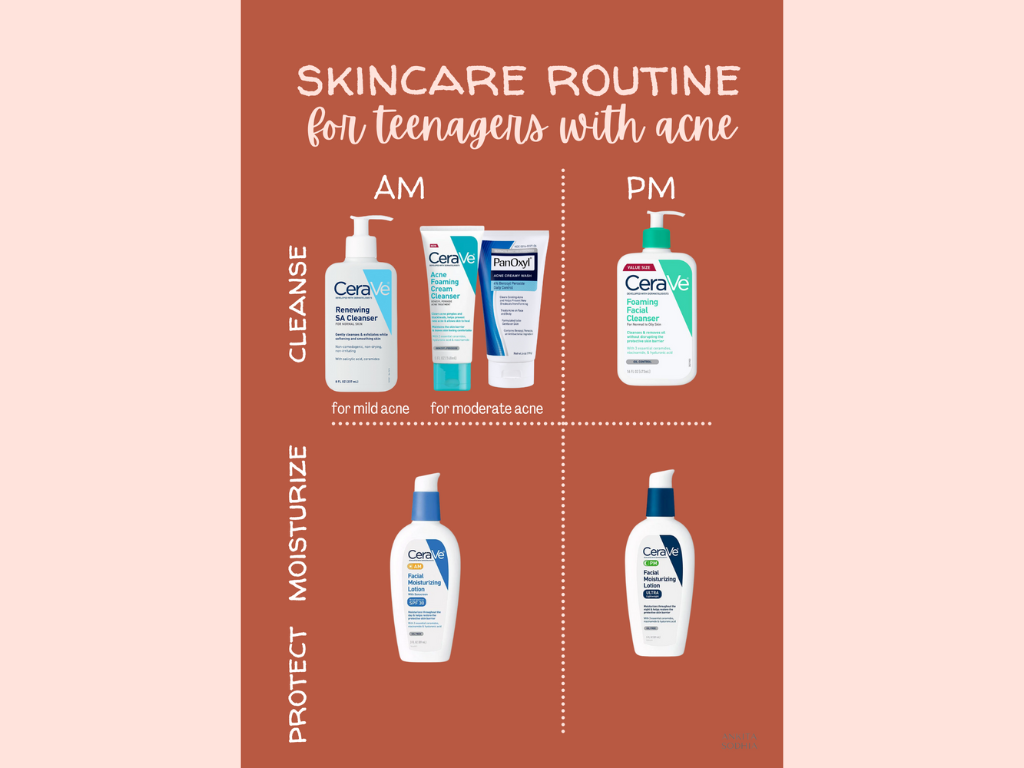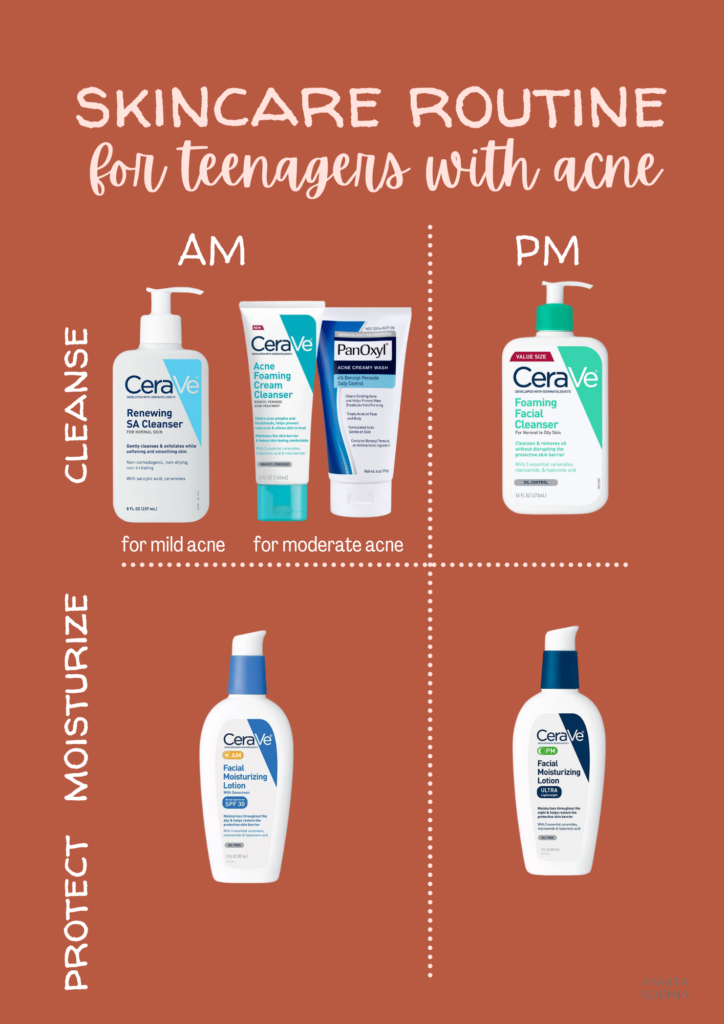Best Skincare For Teens: A Simple Guide To Managing Acne
Skincare for teens! Arguably the trickiest phase for both parents and their kids. This guide should serve as a good starting point to help navigate the world of skincare for teens and managing acne.
Table of Contents
Why do teens get acne?
The main cause of acne in teens is a surge of hormones, which occurs during the adolescent years, and causes the oil glands under the skin to become overactive and produce excess oil (sebum). This excess sebum builds up and clogs pores, which leads to acne breakouts in the form of white heads, black heads and pimples. These are considered common and less severe forms of acne.
The oil glands also cause overproduction of acne-causing bacteria. If a clogged pore gets infected with bacteria, then this means the infection has penetrated deep and turns into a pustule or cyst (raised lesions filled with pus). These are considered more severe types of acne.
Skincare for teens: benzoyl peroxide vs salicylic acid
Due to hormonal changes, many teens experience acne breakouts. There are two key ingredients to battle acne that you will most likely hear about: benzoyl peroxide and salicylic acid.
Benzoyl peroxide
Benzoyl peroxide (BPO) is an antibacterial agent, which kills off P.acnes, the bacteria that causes acne and reduces excess sebum productions. It is a popular ingredient because it works for all levels of acne issues ranging from mild to severe. Since BPO gets to the very root of the acne problem, it is more popular as a first line of defense for teens. Remember that BPO is a powerful ingredient and can cause irritation and drying. One more thing to know about BPO is that it can bleach clothing and sheets when your skin comes in contact.
If you plan to use BPO in a serum, treatment or cream, then choose a product with 2.5% (the lowest percentage available).
If you use it in a face wash, then you can opt for anything 5% and below.
You can expect to see results in about 5-7 days with BPO.
Salicylic acid
Salicylic acid (SA) is a type of beta hydroxy acid (BHA), which unclogs pores, by removing excess sebum and dead skin cells, but does not target the bacteria. So, it is best suited for those with mild acne. It’s not quickly recommended to teens because some may be allergic to salicylic acid. Salicylic acid is most effective at 2%. Using a higher percentage runs the risk of causing sensitivities.
You can expect to see results in 4-6 weeks with SA.
Moisturizing and sun protection are important in skincare for teens
General skin health also plays a big part for those with acne-prone skin. Keeping the skin cleansed, moisturized and protected are extremely important for a number of reasons:
- If the skin isn’t cleaned properly, then dirt and debris will clog pores, leading to breakouts
- If the skin isn’t moisturized, then that means the skin will seek hydration and produce more sebum (oil) to compensate, which can also lead to breakouts
- If the skin isn’t protected against the sun, then using ingredients such as benzoyl peroxide and salicylic acid is risky because they make the skin extra sensitive, especially in the sun — you run the risk of experiencing irritation and redness
Skincare for teens with acne
Keeping in mind the tips above, here’s are examples of skincare routine for teens with acne:
For mild acne
Morning routine:
- Cleanse with a face wash with salicylic acid (2% or lower)
- Moisturize (using a moisturizer with SPF 50 works to combine both the steps into one)
- Sun protection (mineral sunscreens are better for acne-prone skin)
Night routine:
- Cleanse with a gentle face wash (salicylic acid cleansers should only be used once a day, so be sure to have an alternative for the night)
- Moisturize
For moderate acne
Morning routine:
- Cleanse with a face wash with benzoyl peroxide (5% or lower)
- Moisturize (using a moisturizer with SPF 50 works to combine both the steps into one)
- Sun protection (mineral sunscreens are better for acne-prone skin)
Night routine:
- Cleanse with a gentle face wash (BPO cleansers should only be used once a day, so be sure to have an alternative for the night)
- Use a spot treatment (only if required — best to see a doctor about this before starting anything)
- Moisturize
For severe acne or if you aren’t seeing the desired results, then it’s time to see a dermatologist. It is common for teenagers to be prescribed topical ointments and antibiotics for acne — don’t worry, if that is the case for you, it won’t last forever 🙂
Related:
Skincare For Kids And Babies: A Simple Guide





